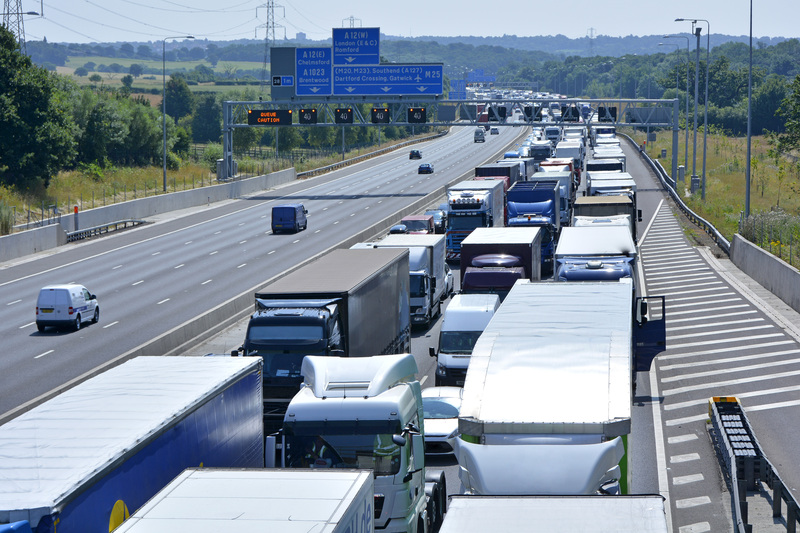The Roadmap to Flawless Packing for House Relocation
Posted on 22/05/2025
Moving homes is a significant event, often filled with anticipation and excitement--but it can easily become overwhelming without a well-thought-out packing strategy. Packing for house relocation isn't just about putting things into boxes; it's a methodical process that when done correctly, ensures a smoother, less stressful transition into your new space. In this detailed guide, we'll walk you through the comprehensive roadmap to ensure your next house move is as seamless as possible. Ready? Let's dive into flawless packing for relocation!
Why Efficient Packing is Crucial for Moving Homes
Organized packing doesn't just save time--it protects your possessions, reduces moving day chaos, and sets the stage for an easier unpacking experience. Investing time in creating a roadmap for your house move makes all the difference when it comes to:
- Minimizing damage to your belongings during transit
- Streamlining the unpacking process in your new home
- Saving on moving costs by maximizing box space and avoiding unnecessary packing materials
- Reducing last-minute stress and confusion
Now, let's break down the entire process into actionable steps!

Step 1: Strategic Planning - Your Packing Masterplan
Start Early and Create a Packing Timeline
You should begin preparations at least six weeks before your house relocation date. Starting early allows you to pack methodically, rather than hastily cramming things in at the last minute.
- Use a moving checklist to outline weekly tasks.
- Allocate specific days for sorting, decluttering, and packing each area of your home.
- Label boxes as you go (we'll dive deeper into this below).
Inventory Time: Know What You Own
Walk through your home, room by room, and compile a written or digital inventory of your belongings. This helps in:
- Estimating how many boxes and supplies you'll need
- Identifying any valuable or fragile items that require special care
- Making insurance easier if anything is lost or damaged during the move
Declutter Before Packing
Flawless packing for house moving always starts with removing items you no longer use or need. The less you bring, the more cost-effective and efficient your move will be. Set aside items for donation, selling, recycling, or disposal.
- Organize a garage sale or donate to local charities.
- Properly dispose of hazardous materials (old paint, batteries, expired medications) as these generally cannot be transported by movers.
Step 2: Procuring the Right Packing Supplies
Essential Packing Materials Checklist
Investing in quality packing materials can significantly safeguard your belongings. Here's what you'll need for faultless house relocation packing:
- Sturdy moving boxes in various sizes
- Packing tape and tape dispensers
- Bubble wrap, foam sheets, or packing peanuts for cushioning
- Packing paper or unprinted newsprint
- Permanent markers for labeling
- Colored labels or stickers for room identification
- Scissors and utility knives
- Stretch/cling wrap for securing furniture and drawers
- Specialty boxes for wardrobe, dishes, TVs, etc.
- Moving blankets or old towels for extra protection of furniture
Eco-Friendly Packing Options
For a sustainable approach, consider reusing old boxes, clothes, towels, and linens instead of buying new packaging materials. Some moving companies even offer reusable plastic crates for rent.
Step 3: Room-by-Room Packing Techniques
General Packing Guidelines for Every Room
Regardless of the room, some golden packing rules apply for flawless house moving preparation:
- Always begin with items you use least often.
- Pack one room at a time to stay organized and prevent mix-ups.
- Heavier items go in smaller boxes; lighter items can fill larger boxes.
- Never leave empty spaces in boxes--fill gaps with clothing or packing paper to avoid shifting.
- Clearly label each box with its room and contents using bold markers.
Kitchen Packing Tips
- Encase plates and glassware in bubble wrap or paper, then stack them vertically (like records) in sturdy boxes.
- Pack pots and pans with lids removable to maximize space.
- Group and wrap utensils; keep a set or two accessible for moving day snacks.
- Defrost, clean, and dry the refrigerator 24-48 hours before moving.
Living Room Packing Strategies
- Disassemble furniture if possible for easier transport.
- Wrap electronics in original packaging if available, or double-layer with soft blankets and bubble wrap.
- Pack decorative items and artwork with extreme care, using foam sheets and corner protectors.
- Label wires, remote controls, and components for quick reassembly.
Bedroom Packing Techniques
- Keep clothes on hangers and use wardrobe boxes for a wrinkle-free move.
- Pack out-of-season clothing first.
- Store jewelry and valuables in a personal travel bag to keep them with you during the move.
- Remove bedding and pillows, pack in large bags--you'll want these accessible for your first night.
Bathroom Essentials Packing
- Seal all bottles with tape or in Ziplock bags to prevent spills.
- Keep daily toiletries in a personal bag for day-of-move use.
- Dispose of old or expired beauty and medicinal products.
Garage and Outdoor Equipment
- Drain fuel from lawnmowers and power tools--many companies won't transport flammable substances.
- Bundle and wrap garden tools for safer handling.
- Pack outdoor furniture clean and dry to avoid mildew at your new house.
Step 4: Smart Labeling Systems for a Flawless Move
A robust labeling system can make unpacking infinitely easier!
- Use bold, easy-to-read labels on each side and top of every box.
- Color-code boxes by room for quick identification at your new home.
- Assign numbers to boxes and maintain a separate inventory checklist with corresponding contents.
- For fragile items, write "FRAGILE" and draw arrows for correct box orientation.
Step 5: Special Attention - Fragile & Valuable Items
How to Pack Fragile Items
- Double-wrap delicate items with bubble wrap, then cushion with towels or packing paper.
- Place heavier fragile items at the bottom of boxes and lighter ones on top.
- Add extra padding around the sides and top of the box.
- Clearly label as "Fragile"--don't be shy with notes!
Packing Valuables and Important Documents
- Take jewelry, passports, and financial documents with you personally during your move for maximum security.
- Consider using a lockbox or safe for precious items or irreplaceable documents.
- Back up essential files digitally wherever possible.
Step 6: Overflow and Essentials
Prepare an "Open First" Essentials Box
Your first night at your new home will be far easier if you set aside a box (or suitcase) that contains the basics:
- Toiletries and medications
- Change of clothes for each family member
- Phone chargers and electronics
- Basic kitchenware (plates, mugs, utensils)
- Cleaning supplies, toilet paper, towels
- Snacks and bottled water
- Kids' and pets' necessities
Step 7: Final Preparations and Moving Day Checklist
Final Walkthrough
- Double-check all closets, cabinets, and outdoor spaces for forgotten items.
- Confirm moving arrangements with your movers or rental truck company.
- Keep important contacts, keys, and documents handy.
Safety on Moving Day
- Ensure clear pathways for movers by keeping boxes near doors, not blocking walkways.
- Supervise the loading process, especially for fragile or high-value boxes.
- Perform a final sweep before leaving for your new home.
Top Tips & Tricks for Flawless House Moving
- Take photos of complicated setups and electronics before disassembling to make reassembly in your new place a breeze.
- Keep bolts, screws, and small parts in labeled zip bags; tape these bags to the item they belong to.
- Communicate clearly with professional movers regarding fragile or uniquely valuable items.
- Create a moving folder (digital or paper) with contracts, receipts, and moving checklists.
- Consider insurance for high-value belongings, especially during long-distance moves.
Unpacking: The Final Leg of Your House Relocation Roadmap
Flawless house relocation packing doesn't end when you arrive. To avoid being overwhelmed by a sea of boxes, adopt a systematic approach to unpacking:
- Start with essential boxes labeled "open first."
- Move room-to-room, assembling furniture and organizing as you go.
- Take your time with decor and non-essentials--no need to rush aesthetic decisions.
- Break down boxes as they're emptied and recycle or give them away to others preparing to move.

Frequently Asked Questions: Packing for House Relocation
How long does it take to pack a house for relocation?
The timeline depends on your home's size and amount of belongings. For a standard 3-bedroom house, allow 5-7 days of focused packing.
Should I pack myself or hire professional packers?
Self-packing is more economical and gives you control, whereas professionals save time and liability for fragile, bulky, or valuable items. Many choose a hybrid approach.
What shouldn't I pack?
Avoid packing perishables, hazardous materials, and important personal documents. These should be kept with you or properly disposed of.
How can I save money on packing supplies?
Re-use boxes, ask local stores for extras, and use your linens or clothes as cushioning. But never compromise on the safety of fragile items!
Conclusion: Your Blueprint for Flawless Packing & Moving Success
Following this comprehensive roadmap for flawless house relocation packing can make your upcoming move efficient, organized, and low-stress. With careful planning, smart packing strategies, and a focus on essential details, you'll arrive at your new home ready to settle in--free from the chaos of misplaced boxes and damaged belongings.
Remember: Packing for a house move isn't just a chore; it's the foundation for a seamless new beginning. Download checklists, gather supplies early, and stay organized. Happy moving!



